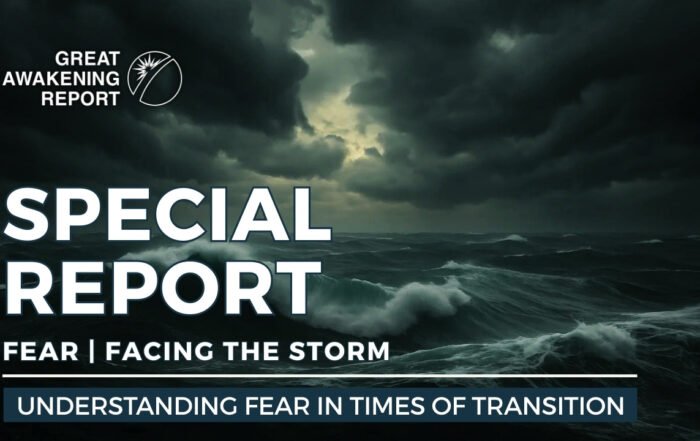Introduction to Winter Weather Predictions
Winter weather predictions hold paramount importance in the United States, especially as we transition into the 2023-2024 season. Accurate forecasts equip individuals, businesses, and government agencies with critical information to prepare for severe weather conditions that can impact safety, travel, and local economies. The National Oceanic and Atmospheric Administration (NOAA) plays a crucial role in weather prediction, utilizing advanced models and historical data. This year’s predictions suggest a mixed bag of conditions, with some regions bracing for severe cold and snow while others may experience milder weather patterns due to phenomena like La Niña. According to forecasts, certain areas in the Midwest and Northeast could face above-average snowfall, complicating travel and increasing the risk of winter storms [Source: Farm Progress].
Winter weather impacts a diverse range of sectors, from transportation to agriculture. For instance, farmers depend on accurate forecasts to plan for irrigation and other seasonal activities [Source: Australian Mining]. Furthermore, municipalities need to be prepared for road maintenance and the management of emergency services, emphasizing the need for timely and precise weather alerts [Source: BCIS].
As we prepare for potential winter challenges, including increased heating costs and disruptions caused by storms, staying informed through reliable forecasts remains essential. Understanding these predictions helps communities mitigate risks and enhance disaster preparedness, ultimately contributing to resilience in the face of winter’s unpredictable nature.
Key Factors Influencing Winter Weather
Winter weather is significantly influenced by a combination of climate patterns, atmospheric conditions, and ocean temperatures.
El Niño and La Niña are key players in affecting winter weather patterns globally. El Niño, characterized by warmer ocean temperatures in the central and eastern Pacific, can lead to wetter conditions across the southern United States and warmer temperatures in the northern regions. In contrast, La Niña, which features cooler-than-average sea surface temperatures in the same areas, typically brings colder and snowier winters to the northern states and drier conditions in the southern U.S. Studies suggest that these phenomena can shift the jet stream, leading to extremes such as heavier snowfall and severe cold spells [Source: NOAA].
Atmospheric pressure systems also play a crucial role in determining winter weather outcomes. High-pressure systems can block storm patterns, resulting in clear skies and dry conditions, while low-pressure systems are associated with storm formation, which can increase precipitation, including snow. The behavior of these high and low-pressure systems is crucial for predicting whether a particular region might experience a mild or harsh winter [Source: National Weather Service].
Ocean temperatures significantly impact winter weather as well. Variations in ocean surface temperatures can influence air temperatures and moisture availability, which in turn affect precipitation patterns across continents. The warmth of ocean waters can lead to increased humidity and precipitation, contributing to stronger storms and varying snowfall amounts. For instance, warmer oceans often correlate with more extreme winter weather events [Source: Scientific American].
Understanding these factors is crucial for better predicting winter weather patterns, allowing for improved preparedness and response strategies across affected regions. For further insights into weather patterns and their implications, explore more on related topics in our articles [Source: The Great Awakening Report] and [Source: The Fall of the Cabal].
Regional Forecasts: What to Expect in Different Areas
As winter approaches in 2023, distinct regional forecasts for the U.S. predict varying conditions that will significantly impact snowfall and temperatures.
Northeast: The Northeast is anticipated to experience above-average temperatures and lower-than-normal snowfall this winter. The general expectation is for milder conditions, which may lead to fewer snow events compared to previous winters. Precipitation remains likely, but much of it can be in the form of rain rather than snow [source].
Southeast: In the Southeast, temperatures are expected to be warmer than average, with potential for rain and storms. Occasional winter weather may occur in the higher elevations of the Appalacians, but significant snowfall events are not forecasted for most areas [source].
Midwest: The Midwest may see a more typical winter, with a mix of seasonal temperatures and snow. The northern regions are likely to receive average snowfall, while southern parts could experience some variability with warmer spells interrupting the normal winter patterns [source].
Southwest: The Southwest is projected to experience above-average temperatures with limited snowfall, particularly in lower elevation areas. Higher elevation locales, such as the Rockies, may see more consistent snowfall, yet significant rain events could accompany this season as well [source].
Northwest: The Northwest should prepare for a winter of unusual climate patterns, with warmer temperatures and a likelihood of above-average precipitation levels. Areas near the Cascades are likely to see substantial snowfall, especially at higher altitudes, while valleys may experience mixed weather patterns [source].
In summary, while many regions may experience milder and wetter conditions than normal, others are expected to follow more traditional winter patterns with varied snowfall. Staying updated through official weather channels is essential as conditions evolve.
Impacts on Agriculture and Economy
Winter weather significantly impacts agriculture and the economy through various means, affecting crop yields, energy consumption, and overall agricultural practices.
Cold temperatures and frost can lead to reduced crop yields, as certain crops are particularly sensitive to frost. For example, grapes and wheat can suffer from frost damage when temperatures drop unexpectedly during critical growth stages. Similarly, heavy snow can physically damage crops, making harvesting and cultivation difficult and reducing production capacity [Source: Farm Progress].
Moreover, winter weather influences energy consumption patterns as farmers prepare for the cold months. Heating requirements for livestock, machinery operation, and greenhouse maintenance typically rise, increasing energy costs. This situation can further strain local economies that rely on agriculture, particularly in regions where winter weather is severe and prolonged [Source: Australian Mining].
The economic implications extend beyond direct agricultural effects. Fluctuations in crop yields due to unpredictable winter weather can result in market volatility, affecting commodity prices and farmers’ earnings. For instance, decreased yields might lead to higher prices for consumers, directly impacting food supply chains. This relationship underscores the intricate connection between climate, agriculture, and economics, where adverse weather can ripple through various sectors of the economy, leading to increased costs for consumers and potential financial instability for producers [Source: BCIS].
In conclusion, understanding these effects is crucial for farmers, policymakers, and consumers alike, as winter weather patterns continue to evolve due to climate change, further complicating agricultural viability and economic stability.
Preparing for Severe Winter Weather
Preparing for severe winter weather is crucial for individuals, communities, and businesses to ensure safety and minimize disruptions. Here are actionable tips and guidelines:
1. Stay Informed: Regularly check weather forecasts and alerts from reliable sources such as the National Weather Service. This helps to anticipate and prepare for severe winter conditions.
2. Emergency Kits: Assemble emergency kits containing essentials such as non-perishable food, water, medications, batteries, flashlights, and first aid supplies. The Red Cross recommends having enough supplies to last for at least three days [Source: Red Cross].
3. Home Preparation: Insulate your home properly. Seal drafts and ensure your heating system is functional. Check smoke detectors and carbon monoxide detectors to err on the side of safety [Source: National Grid].
4. Vehicle Readiness: Prepare your vehicle for winter conditions by ensuring your tires are suited for snow, your battery is charged, and you have an emergency kit in your car. This includes blankets, a shovel, sand or kitty litter for traction, and a flashlight [Source: NHTSA].
5. Community Awareness: Engage in community preparedness programs. Mobilizing local groups can enhance resource sharing and foster a culture of preparedness. Encourage neighbors to share their plans and resources, creating a supportive network during emergencies [Source: FEMA].
6. Business Continuity Plans: Businesses should develop robust continuity plans. This includes strategies for workforce management and supply chain disruptions. Consider having remote work policies and ensuring that you have backup technologies in place [Source: CDC].
By taking proactive measures now, individuals, communities, and businesses can better navigate the difficulties posed by severe winter weather.
Conclusion: The Road Ahead
As winter approaches, staying informed and adequately prepared for unpredictable weather becomes essential. The significance of timely updates cannot be overstated, particularly as severe winter storms can lead to hazardous conditions, power outages, and increased travel risks. Access to reliable weather forecasts and warnings allows individuals and families to make informed decisions regarding safety and preparedness. Utilizing resources such as the National Weather Service provides real-time alerts and forecasts that can significantly aid in planning and preparation, ensuring readiness for any unforeseen winter challenges [Source: National Weather Service].
For continuous updates, several online platforms offer extensive weather information and alerts. Various smartphone applications and websites, including The Weather Channel and AccuWeather, provide localized forecasts, radar maps, and severe weather notifications that can help you stay updated on changing conditions. Furthermore, integrating a community preparedness plan that includes family communication strategies and local emergency contact resources enhances readiness during winter storms [Source: Ready.gov]. For ongoing discussions around weather preparedness and other related topics, consider reading about community strategies in the weekly briefing on community preparedness or consult local weather service updates frequently.
Sources
– National Oceanic and Atmospheric Administration (NOAA)
– Farm Progress
– Australian Mining
– BCIS
– NOAA Review of El Niño and La Niña
– National Weather Service
– Scientific American
– The Great Awakening Report
– The Fall of the Cabal
– Red Cross
– National Grid
– NHTSA
– FEMA
– CDC
– Ready.gov
– Weekly Briefing on Community Preparedness
Share This Report
Have questions?
At Great Awakening Report, we are dedicated to supporting your journey toward truth and enlightenment through our specialized Coaching and Consulting services.
Coaching Services: Our coaching programs are designed to guide you through personal awakening and transformation. We offer personalized sessions that focus on expanding consciousness, uncovering hidden truths, and fostering spiritual growth. Our experienced coaches provide the tools and insights necessary to navigate your path with clarity and confidence.
Consulting Services: For organizations and individuals seeking deeper understanding and strategic guidance, our consulting services offer expert analysis and solutions. We delve into areas such as global transitions, alternative news insights, and consciousness studies to provide comprehensive strategies tailored to your unique objectives.
Embark on a transformative journey with our Coaching and Consulting services, and unlock your highest potential. To learn more and schedule a session, visit our Coaching and Consulting pages.
Thank you
Thank you to our subscribers and readers for your continued support and dedication to truth and awakening. Your encouragement, engagement, and belief in our mission make everything we do possible. Together, we are expanding awareness and helping illuminate the path forward.
If you would like to further support the Great Awakening team and our ongoing efforts to share insight, knowledge, and truth, you can DONATE HERE.
With deep gratitude,
– Great Awakening Team
DISCLAIMER: All statements, claims, views and opinions that appear anywhere on this site, whether stated as theories or absolute facts, are always presented by The Great Awakening Report (GAR) as unverified—and should be personally fact checked and discerned by you, the reader.Any opinions or statements herein presented are not necessarily promoted, endorsed, or agreed to by GAR, those who work with GAR, or those who read or subscribe to GAR.Any belief or conclusion gleaned from content on this site is solely the responsibility of you the reader to substantiate.Any actions taken by those who read material on this site are solely the responsibility of the acting party.You are encouraged to think for yourself and do your own research.Nothing on this site is meant to be believed without question or personal appraisal.
COPYRIGHT DISCLAIMER: Citation of articles and authors in this report does not imply ownership. Works and images presented here fall under Fair Use Section 107 and are used for commentary on globally significant newsworthy events. Under Section 107 of the Copyright Act 1976, allowance is made for fair use for purposes such as criticism, comment, news reporting, teaching, scholarship, and research.
COMMUNITY GUIDELINES DISCLAIMER: The points of view and purpose of this video is not to bully or harass anybody, but rather share that opinion and thoughts with other like-minded individuals curious about the subject.









